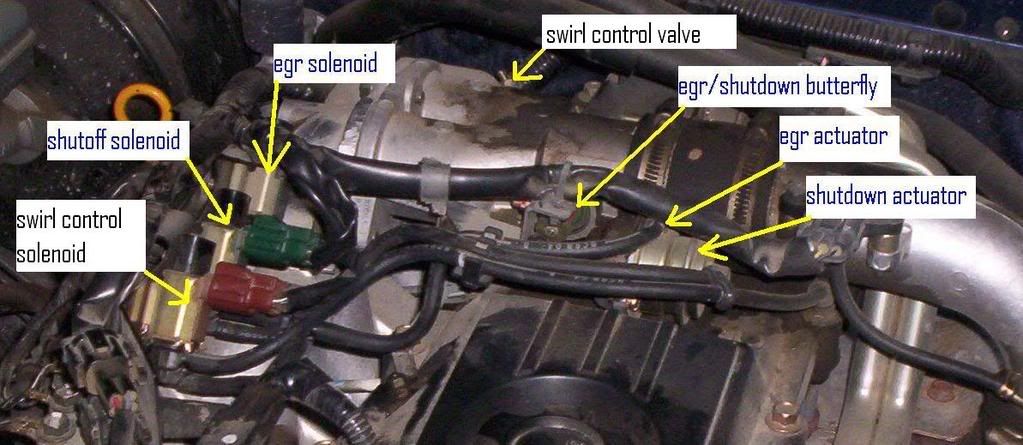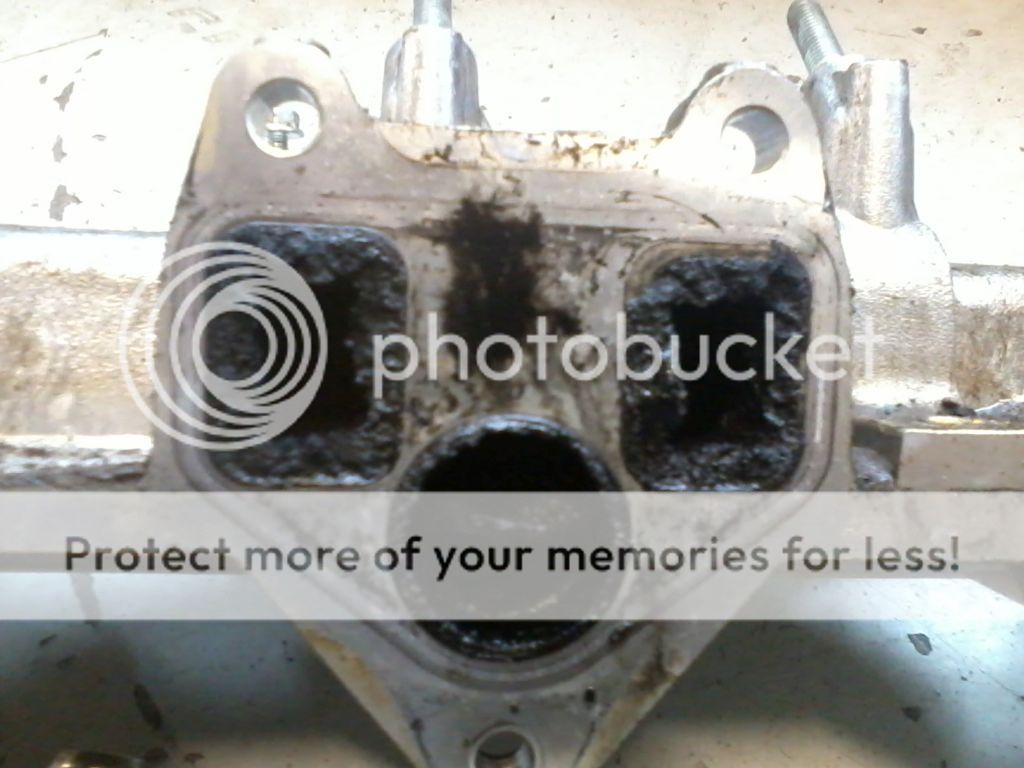Silk,
this is another person's photo, but it's the same as mine.
The "swirl control" solenoid forces the air to follow the high swirl port in the heads/inlet.
The EGR solenoid partially closes the shutoff butterfly to drop the intake pressure and get the EGR flowing...the swirl is supposed to mix the gasses.
And the shut-off does what it's name suggests.
So just off idle, the EGR solenoid partially closes th shutoff solenoid, and closes the high flow butterfly, forcing the air/egr through the high swirl port in the manifold/head.
Every gear change it does the same.
Anecdotaly, the couple of people I know who have burned down a Navara ZD30 have done it just after shifting down to third with a load...the premise is that the choked airflow with full fuel gets too hot.
There's a set of lights here in town on a reasonable slope upwards, and I hated having to "dance" with the accelerator and clutch, as as soon as you start to load, the combo of butterflies and EGR kills torque.
I've pulled the plug on the swirl solenoid. blocked the EGR and re-routed the shutoff solenoid plumbing so that it does only shutoff.
I can now pull away from that interesction with no accelerator if I choose, it's that torquey down low...I can give another Navara owner a drive, and they ALL notice that it's not finicky off idle.
mods here
http://www.navara.asia/archive/index.php/t-64.html











